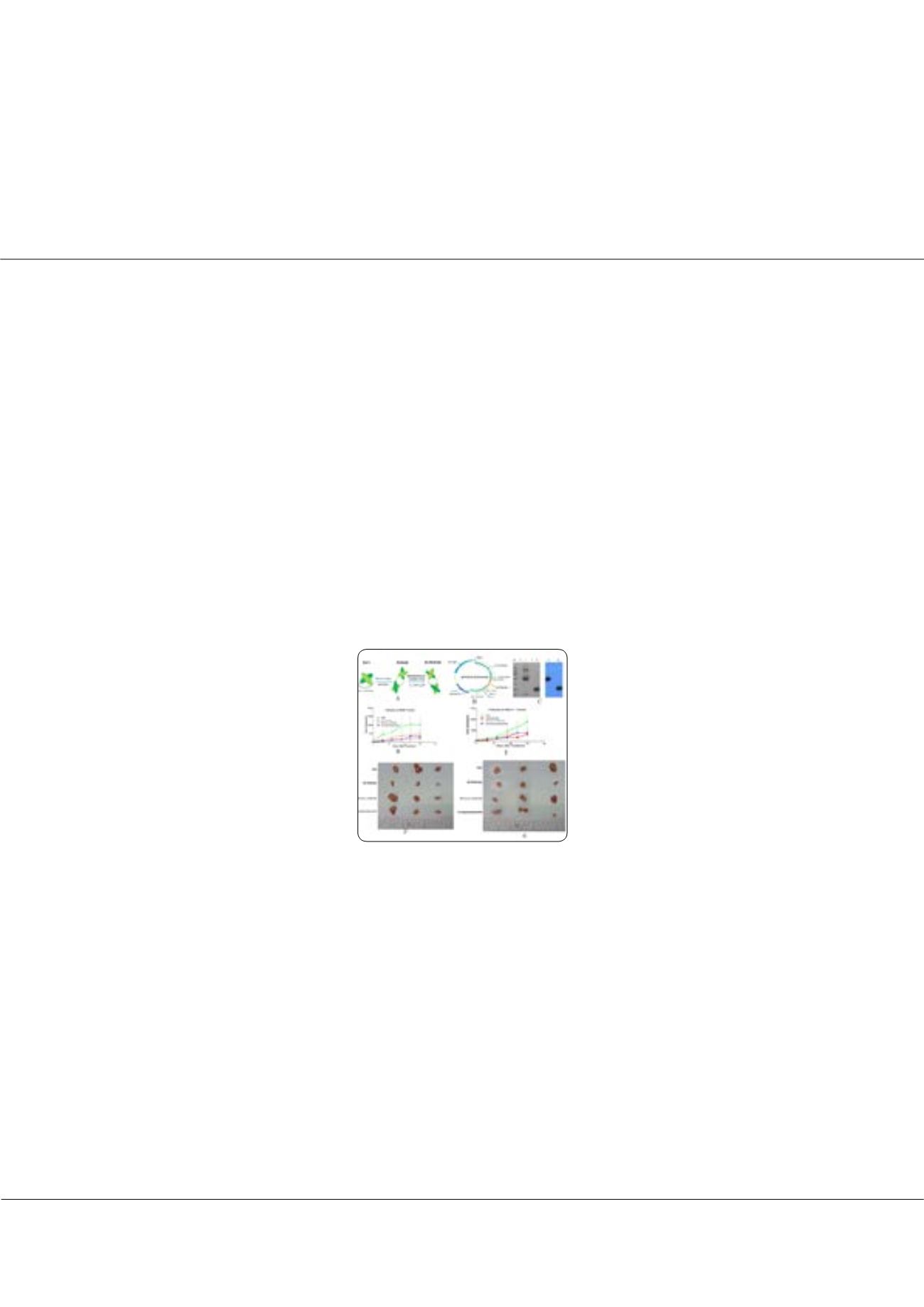

Page 66
conferenceseries
.com
Volume 10
Journal of Cancer Science & Therapy
ISSN: 1948-5956
Euro Cancer 2018
July 23-25, 2018
July 23-25, 2018 | Rome, Italy
29
th
Euro-Global Summit on
Cancer Therapy & Radiation Oncology
A new disulfide-stabilized diabody against bFGF and the inhibition of cancer
Ning Deng
Jinan University, China
A
ngiogenesis plays a critical role in tumor growth. Fibroblast growth factor-2 (FGF-2) is one of the most important
angiogenic factors. The over-expression of bFGF plays a crucial role to promote tumor growth, progression and metastasis.
Neutralizing antibodies against FGF-2 may suppress the growth of tumor cells by blocking the FGF-2 signaling pathway. In
our lab, we scanned human anti-bFGF antibody from the phage antibody library. The results showed that the human anti-
bFGF antibody could significantly inhibit the tumor angiogenesis and inhibit the tumor growth and migration. Based on
this antibody, a newly small molecular antibody of disulfide-stabilized diabody (ds-Diabody) against bFGF was constructed
by site-directed mutation and overlap extension PCR (SOE-PCR) at the position of VH44 and VL100 in the scFv. The ds-
Diabody was expressed in
Pichia pastoris
system. We found that the ds-Diabody against bFGF could maintain good antigen
binding activity and stability
in vitro
and
in vivo
. The ds-Diabody against bFGF could efficiently suppress the proliferation,
migration and invasion of human lung cancer (A549 cells) and breast cancer (MCF-7 cells), inhibit bFGF-induced activation
of downstream signaling regulators, phospho-Akt and phospho- MAPK. In the nude mouse xenograft model, the ds-Diabody
against bFGF could significantly inhibit tumor growth, tumor angiogenesis and lymphangiogenesis. The ds-Diabody against
bFGF showed stability
in vivo
and could more effectively suppress the tumor growth through blockade of bFGF signaling
pathway and inhibition of tumor angiogenesis, which may make it a potential therapeutic candidate antibody drug for human
lung cancer therapy.
Figure 1:
Construction and function of ds-Diabody against bFGF. A construction of ds-Diabody; B expression vector; C expression of ds-Diabody; D growth curve
of lung cancer; F growth curve of breast cancer; F tumors of lung cancer; G tumors of breast cancer
Recent Publications:
1. Yaxiong Cai, Shuange Yao, Ning Deng, et al. (2017) Inhibition activity of a disulfide-stabilized diabody against basic
fibroblast growth factor in lung cancer. Oncotarget 8(12): 20187–20197.
2. Yinghua Li, Zhengfang Lin, Ning Deng and Bing Zhu (2017) Delivery of VP1 siRNA to inhibit the EV71 virus using
functionalized silver nanoparticles through ROS mediated signaling pathways. RSC Adv. 7:1453–1463.
3. Yaxiong Cai, Jinxia Zhang, Ning Deng (2016) Construction of a disulfide-stabilized diabody against fibroblast growth
factor-2 and the inhibition activity in targeting breast cancer. Cancer Science 107(8):1141–1150.
4. Shoumei Bai, Patrick Ingram, Yu-Chih Chen, Ning Deng and Ronald J Buckanovich (2016) EGFL6 regulates the
asymmetric division, maintenance, and metastasis of ALDH+ovarian cancer cells. Cancer Res. 76(21):6396–6409.
Ning Deng, J Cancer Sci Ther 2018, Volume 10
DOI: 10.4172/1948-5956-C8-144
















